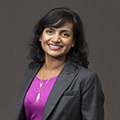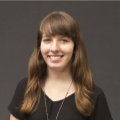 | 1.5 LU |
 | 1.5 LU |
Effective visioning allows the development of educational ideas in pedagogy, curriculum implementation and leadership. Achieving a successful outcome relies on alignment between educational ideas and facility design (Bojer, 2020; Daniels, 2020). A key framework for visioning exercises is found in Participatory Design and Responsible Innovation (Woolner, 2017; Deppeler & Aikens, 2020). This session will present case studies employing the above framework for achieving quality education outcomes through effective visioning. By exploring an elementary and high school setting in Australia, a range of methods will be presented. Architectural outcomes relating to the visioning insights will be shared. Participants will reflect on their existing or upcoming projects using the above framework to identify opportunities for refinement or change. This process oriented workshopping will equip participants with new tools for reflecting on and building educational visioning processes.
Learning Objectives:

Dr. Alterator is research fellow at learning Environments Applied Research Network at University of Melbourne. For the past 12 years his research has focused on post-occupancy evaluation and the alignment of practice and design. He is currently researching links between learning spaces and inclusive education. Scott is a teacher 'by trade' and enjoys engaging with schools on a regular basis through consultancy work. Along with a range of design-focused work, he has focused on activating STEAM learning as a means of exploring innovative practices.

As a Registered Architect, Accredited Learning Environment Planner and joint creator of Unboxy, Matt has led a team of committed creatives who were awarded the James D MacConnell Award in 2020. Matt has helped hundreds of clients around Australia, Asia and the Middle East realise their dreams and create ‘community’, using a unique blend of industry insight, ingenuity and vision. Having achieved the ALEP designation in 2019, Matt joined the ALEP Commission providing an international perspective to refine the process and create legacy pathways for accreditation within the Australasian region. Matt continues to forge relationships across the globe, expanding the Unboxy initiative into African, South and North American communities sharing the collateral of the ‘not for profit’ educational tool.

Sangeetha is an Associate Principal at Corgan and has dedicated her career to the design of educational spaces. Her 20 years of experience in education architecture and commitment to research-based design drives her passion to create spaces that inspire creativity and innovation. Sangeetha guides clients through thoughtful design and planning that foster collaboration, health and wellness among students and educators. Sangeetha received a Master of Interior Design from Savannah College of Art and Design and a Bachelor of Architecture from Anna University in India.

Chloe is a Design Researcher in Corgan’s education studio where she contributes research-based insight and design strategies to K-12 and higher education projects. With graduate degrees in both Architecture and Applied Cognition and Neuroscience, Chloe’s understanding of the complexities of adaptive learning leads to designs that integrate those principles seamlessly within the built, virtual, and natural environment.
The built and natural environments have profound impacts on our behaviors both for better and worse. How do we cultivate a sense of place for better? How might the built and natural environments be made to enhance teaching and learning? How might school buildings and grounds foster a sense of community by reflecting those they serve?
Primary Core Competency
Educational Visioning: Exhibits an understanding of best and next practices related to educationalleadership, programming, teaching, learning, planning and facility design. Establishes credibility with educators, community members and design professionals while conceiving and leading a community-based visioning process. Demonstrates the ability to articulate the impact of learning environments on teaching and learning and uses that ability to facilitate a dialogue that uncovers the unique needs and long-range goals of an educational institution and its stakeholders – translating that into an actionable written/graphic program of requirements for the design practitioner.